 | |
high resolution Milky Way dark matter halos simulated on NASA's Columbia and ORNL's Jaguar supercomputers |
main
movies
images
publications
data
screensavers
about
VL-2 movies
This movie rotates and zooms into the via lactea-2 halo at z=0 (today). The colors show the local dark matter densities.
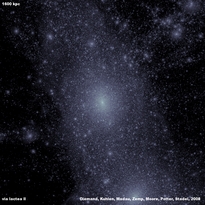 |
|
VL-1 movies
These animations show the projected dark matter density-square maps of the simulated Milky Way-size halo via lactea-1. The logarithmic color scale covers the same 20 decades in projected density-square in physical units in each frame. All movies are encoded in MPEG format and some are available in different quality versions.the formation of the via lactea halo
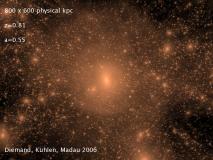 |
|
rotation and zoom into the via lactea halo at z=0 (today)
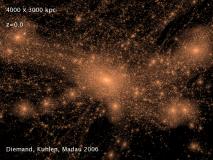 |
evolution of the via lactea halo and one of its subhalos since z=2
This movie illustrates the evolution of subhalos by following one example (subhalo #13351). Tidal forces remove most of the mass from this system. During the last pericenter passage it comes within 5.1 kpc of the galactic center, but the inner part of the subhalo is still able to survive (even mass beyond the tidal radius at pericenter remains bound to the subhalo, see astro-ph/0703337).
Also note how the subhalo becomes rounder during tidal mass loss, and how its major axis points roughly towards the galactic center most of the time, see astro-ph/0705.2037.
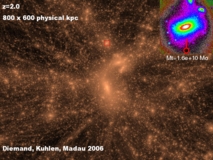 |
|
 |
|
infall caustics in dark matter halos?
The following two movies show the mass accretion and halo structure of via lactea in the radial velocity - radius plane. They are animated versions of figures 1 and 2 in astro-ph/0804.4185.
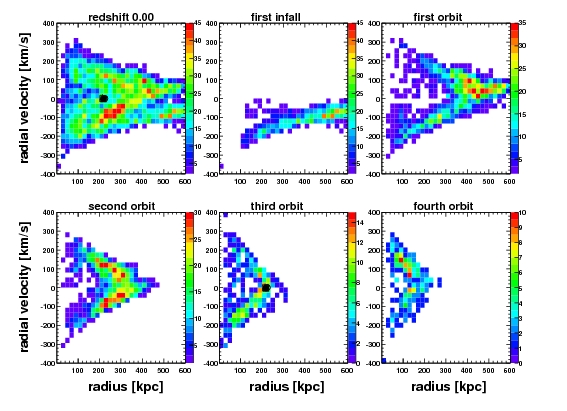 |
phase space distribution of subhalos
|
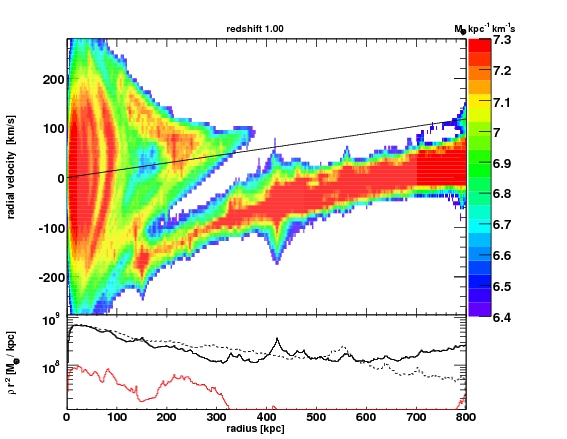 |
|
last updated: August 6, 2008, by J. Diemand

|
This work is licensed under a Creative Commons Attribution-NonCommercial 2.5 License,
please acknowledge the via lactea project and/or its authors wherever material from this web site is used. | ||||